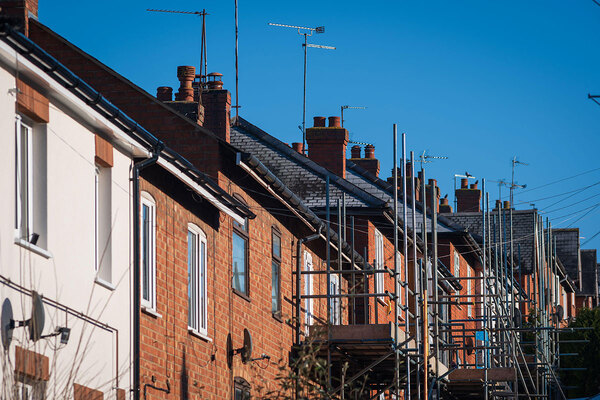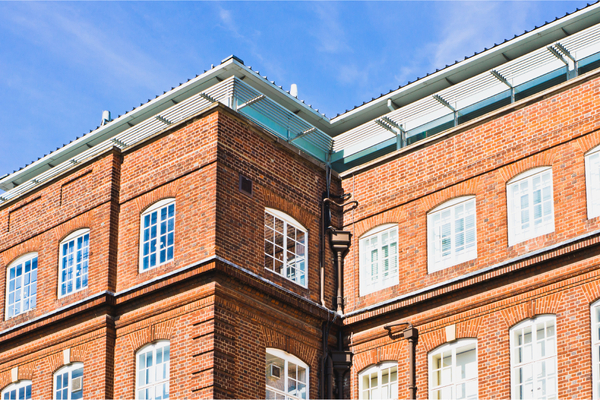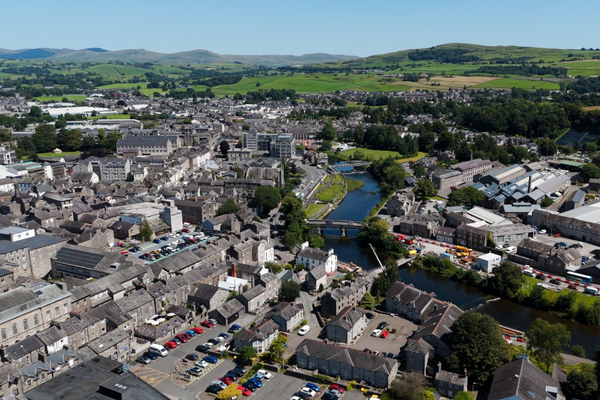Why measure the embodied carbon of a retrofit?
You’ve already made the wonderful, low-carbon decision to retrofit your buildings. Why bother counting how much carbon you’ve saved in doing so? There’s increasing interest in, and in some cases requirement to, measure and minimise embodied carbon in new buildings. This is now starting to seep into how we think about retrofit work as well, particularly as a key component of a building’s whole life carbon.
When any building was constructed, carbon was emitted. If we can maximise the utility of those emissions, rather than demolishing and emitting more carbon in creating a new building, that’s a good thing. But without quantification it can be hard to make this consideration count in the decision-making process, when there are hard numbers for the financial cost of the various options.
Knowing that rebuilding would be more embodied-carbon-intensive was part of the process of rejecting demolition at Wilmcote House, with the project instead turning into a transformational EnerPHit-level retrofit of 111 homes. We used this experience to inform our work at James Riley Point in East London. Four outline options were drawn up; a deep retrofit, deep retrofit with new balconies, deep retrofit with significant extension, and demolition and rebuild. Each was given a score across a range of weighted metrics. The deep retrofit with balconies was deemed the most beneficial overall, and we are now in RIBA Stage 4 of an EnerPHit retrofit of the 23 storey tower block. Without the embodied carbon being measured, it wouldn’t have featured in the decision making, leading to different, more carbon-intensive outcomes. Retaining but transforming the tower keeps something of the old estate, that residents are keen not to lose, while breathing new life into it.
Secondly, knowing the relative impact of the materials we choose to retrofit with can inform our specification, leading to lower carbon outcomes in the long run. With some of the big hitters in terms of embodied carbon, such as foundations and structure retained, it’s less obvious which materials are contributing most to the embodied carbon of a retrofit. We’ve found that replacements through the building’s future life can really start to add up, so that choosing more durable options can actually be a great way to keep lifetime embodied carbon down.
Items such as flooring, while not particularly voluminous, typically have a relatively high carbon footprint per metre squared. As these will then likely be replaced several times over a 60 year lifespan, the total embodied carbon quickly adds up. Specifying items such as windows and finishes that will endure can be a long term saving in terms of pounds and carbon. This also highlights the impact of good maintenance, otherwise these benefits may not be realised.
Knowing the impact of the materials we retrofit with is leading to a growing awareness that while retrofit is better than rebuilding, the embodied carbon impact can still vary significantly. There are advocates for only using bio-based materials for retrofit, along with the radical change to our land use and farming that would be required to achieve this. This could lead to truly net zero buildings, with benefits for biodiversity, fair trade and valuing of skilled labour, alongside better internal air quality and for traditional buildings, retaining ‘breathability’ throughout the construction. Meanwhile many of us are currently carrying out retrofits with budget limitations and shortages of labour and materials for more ‘standard’ retrofit solutions, so the idea of adding further novelty, perceived risk, and commensurate cost is not very appealing. Even if we could afford to wait for alternatives, of course we don’t only retrofit to reduce carbon emissions. We are also reducing fuel bills and improving residents’ comfort.
The answer is probably not binary – we’re in a crisis and we need all the solutions, as soon as possible. We need to keep retrofitting as well as we can with the materials and skills we are used to, while also developing lower carbon alternatives. The materials we use for all building work, including retrofit, do need to be radically re-evaluated, so that by the time we’ve retrofitted a couple of million homes, we can use more natural materials for the other 26 million.
Finally, we’ve looked at embodied carbon as part of a whole life carbon study, sometimes as part of a wider strategy for whole estate decarbonisation. Visualising the impact of embodied and operational carbon of interventions over time can help asset managers work out which buildings across an estate to retrofit first. Tying this into existing planned maintenance can reduce the overall costs of retrofit and avoid abortive work. Usually the best example of this is the transition to renewable energy. Whole life carbon studies unsurprisingly tend to show that the earlier a switch to renewables is carried out, the lower the overall carbon emissions are. But the services alterations involved in doing this are in themselves relatively high embodied carbon, so it is best to tie this into the end of life of existing components such as boilers.
In a climate crisis, all our decisions need to be taken through the lens of the impact they have on our environment. If we don’t know the impact, we can’t make the best decisions. And the decisions we make around retrofit, when multiplied by the vast number of homes that need retrofitting, will materially impact on the UK’s overall emissions in the coming years. Don’t stop retrofitting for the want of an embodied carbon assessment, but where possible do let it be part of the web of factors that guide decisions. There’s little point in putting so much effort into reducing buildings’ operational emissions if many tonnes of carbon are emitted to do so!
Lizzy Westmacott is an associate director at regional head of sustainability at ECD Architects with thanks to Matt Wingrove at ECD Architects for his input to this article.



